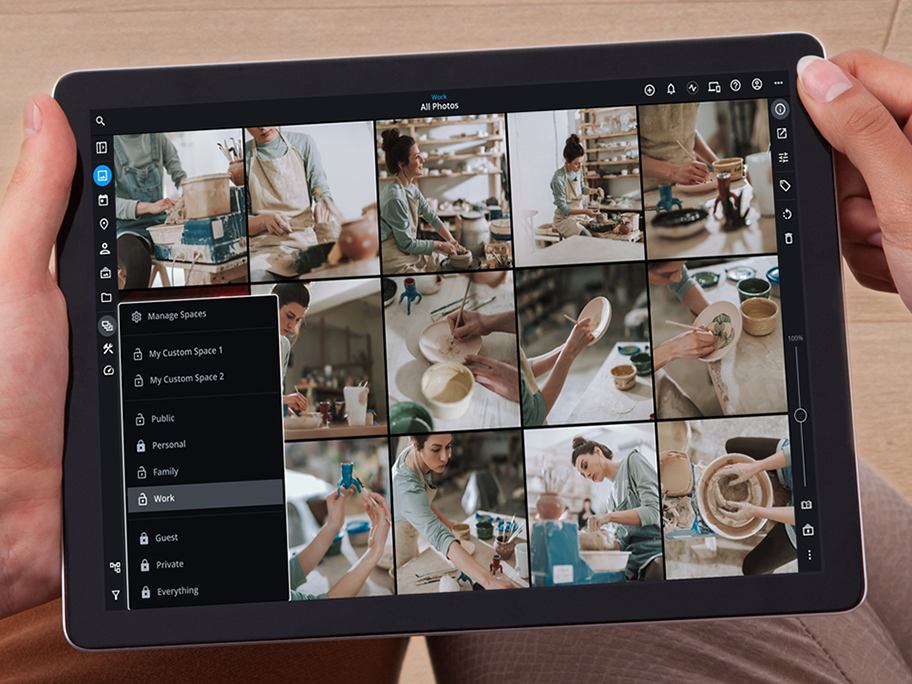Like air travel, indoor dining, and fan-attended sporting events, photo-taking is surging back up this year.
In late 2019, a report from Keypoint Intelligence estimated that the global population would take 1.44 trillion photos in 2020. Then the COVID-19 pandemic put a sudden and lasting pause to a majority of photo-friendly activities, gatherings, and events. In June 2021, Rise Above Research, a consulting firm that provides market research for the digital imaging industry, estimated the 2020 global photos figure was just 1.12 trillion. Blame the global lockdown for a 21% shutter slowdown from 2019.
Photo-taking is expected to bounce back in line with its overall growth trend this year. As the pandemic’s impact eases, Rise Above Research predicts the global number will rebound to 1.4 trillion photos in 2021.
To put a trillion in perspective: If you took one photo per second you would take 1 million photos in less than 12 days and 1 billion in 32 years but getting to 1 trillion would take nearly 32,000 years. The global population is roughly 7.9 billion people, and with not everyone having access to photo-taking devices, it shows that a sizable portion of the population is still very much snapping pictures.
Photo-taking is surging back up in 2021
With warm weather in the Northern Hemisphere and COVID restrictions easing in some countries, people are making up for lost time. They are gathering at celebrations like graduations and weddings as well as traveling for work and vacations.
As a sense of normalcy returns, photo-taking will naturally spike. “I expect photo-taking to settle back at pre-COVID levels then continue to grow,” said Ed Lee, Rise Above Research’s director and principal analyst.

Rise Above Research also projected forward a few years, with the total of photos taken forecasted to reach over 1.6 trillion in 2023. For more details, see the chart below.
Projected number of photos taken 2020 to 2023:

Smartphones are king — but cameras retain a dedicated following
To the surprise of no one, smartphones are still the most-used device. Indeed, mobile phones’ share of total photos worldwide is estimated to rise from 89% in 2020 to over 93% in 2023, as noted in the chart above. “Smartphones will continue to dominate as the primary photo-taking device,” Lee said. “Video is becoming a bigger part of the image-capture mix, particularly among younger adults and teens.”
Over the past decade, smartphones have been the primary driver of the swell in photo- and video-taking, and that isn’t changing. Between 2010 and 2019, using smartphones, tablets, digital cameras, and film cameras, the global population took over 8.6 trillion photos—seven times more than was taken in the previous decade.
Notwithstanding the ubiquity of smartphones, digital camera use is alive and well. A significant group of dedicated and aspiring photographers continue — and will continue — to capture photos as artistic expression or hobby.

Social media drives us to capture more photos
Social media use continues to be a huge motivation behind taking photos, even during the pandemic. “Humans are social creatures and connections so sharing of stories and capturing memories are big drivers behind photo-taking,” Lee said. “Social media has been a huge driver behind the overall increase in photos captured.”
With everything from school to work to social gatherings suddenly online during much of the pandemic, social media offered a way to connect with friends and family. But posting felt … complicated, according to an analysis by Vox. While some reduced or stopped posting due to concerns their posts would seem inappropriate in the context of pandemic-dominated news cycle, others found an outlet and balm for boredom in social media interactions.
“During COVID, there were not as many events to share with friends and family, but people were still eager to share their day-to-day experiences,” Lee said. Indeed, Americans spent an average of 82 minutes on social media in 2020, a 7-minute increase from 2019, according to eMarketer. If photo-sharing and posting slowed for some, for most of us, the desire to scroll through feeds did not.
Photo-focused Instagram is a huge influence behind photo-taking habits with 1.16 billion users as of Q3 2020, while Facebook continues to be a major driver. And new platforms have quickly gained traction, with TikTok announcing 100 million monthly active U.S. users in August 2020, up nearly 800% from 2018.

What happens to all these photos?
With everyday photography on an unstoppable rise, the question is, “What’s happening to all these digital photos and videos?” What are people doing with their ever-growing number (and size) of image files? Again, Rise Above Research has projected a massive increase in our need for photo storage, with photos stored expanding from just under 7 trillion in 2020 to nearly 10 trillion in 2023.
Projected number of photos stored 2020 to 2023:

Ultimately, all this content will need to be stored somewhere. The need for a reliable photo organization tool is more important than ever. If privacy and control over your photos and videos is important to you, Mylio is the perfect solution. Learn how Mylio makes it easy to organize, manage, and protect your visual life story the right way. You can try out Mylio for free, just download the app.
Data Sources: “Rise Above Research 2021 Worldwide Image Capture Forecast,”
Keypoint Intelligence “InfoTrends Worldwide Consumer Photos Captured and Stored”

Nina Pantic is a New York City-based journalist with nearly a decade of experience covering sports and news. She has a keen interest in videography and photography having produced videos and curated photos for both work and fun.


